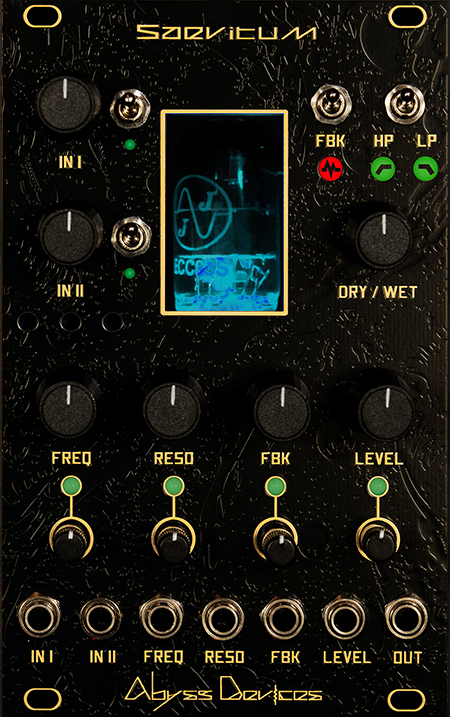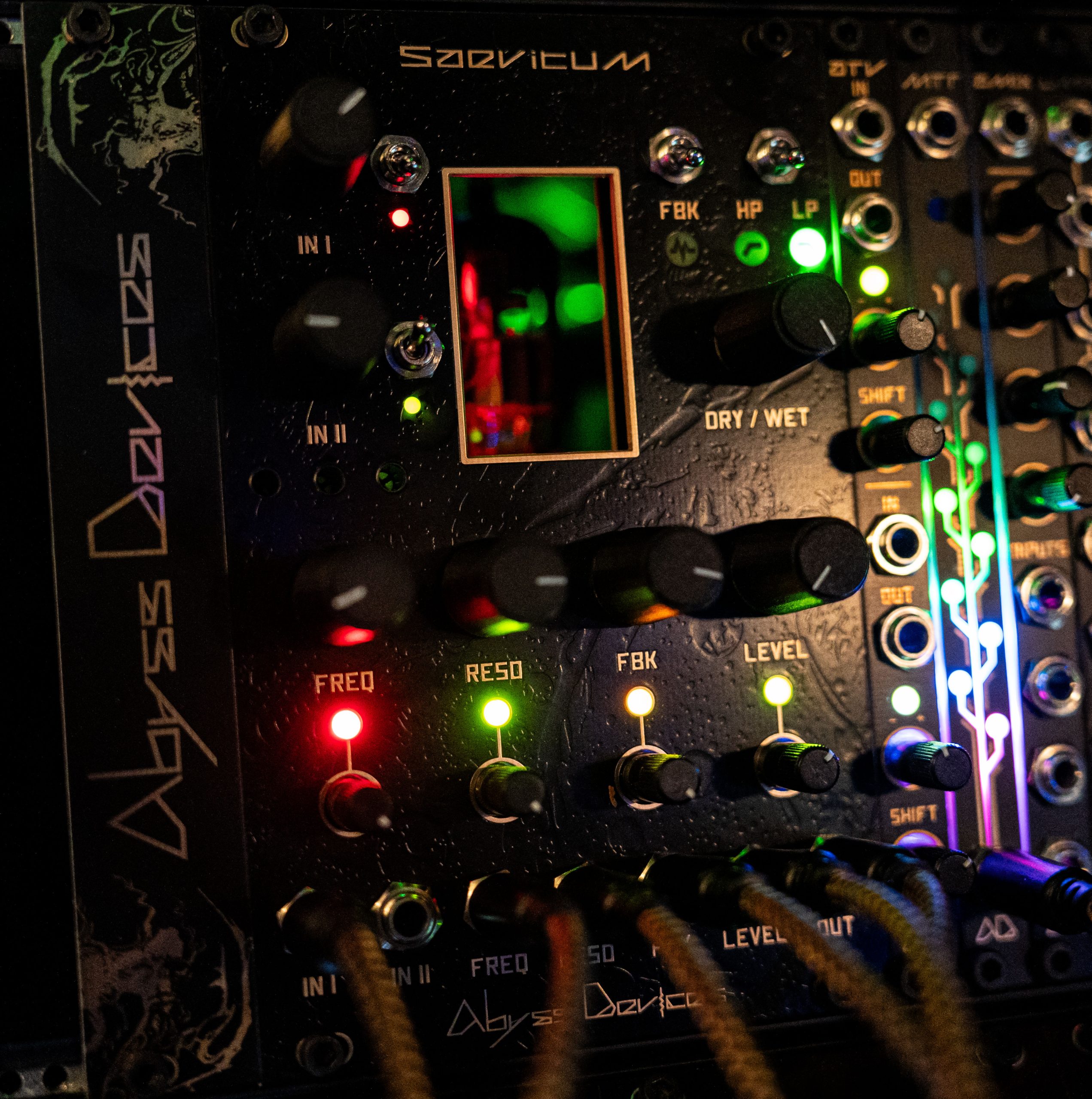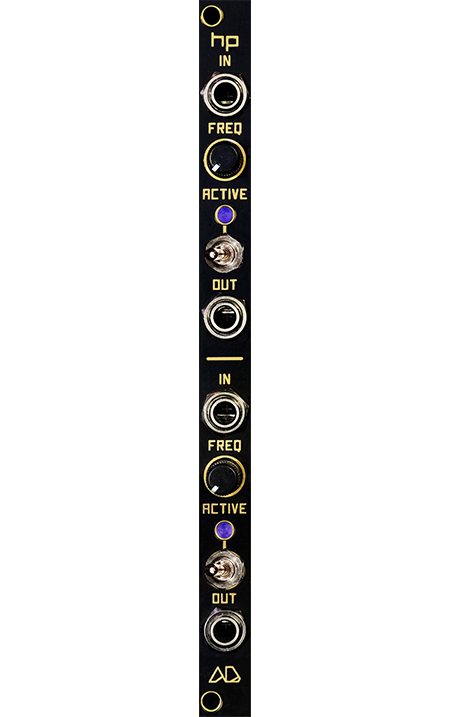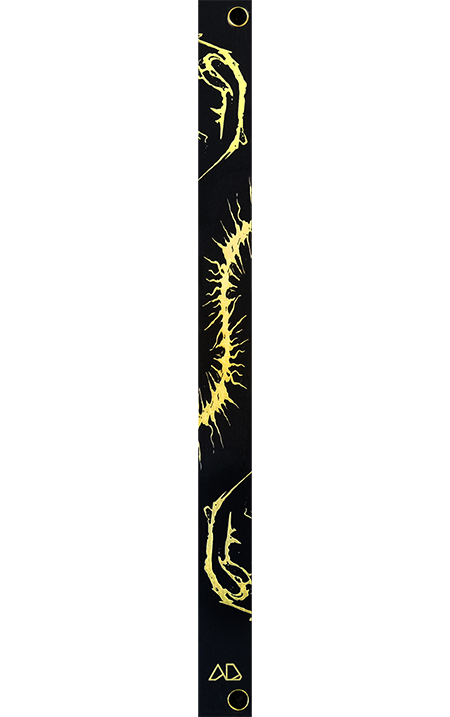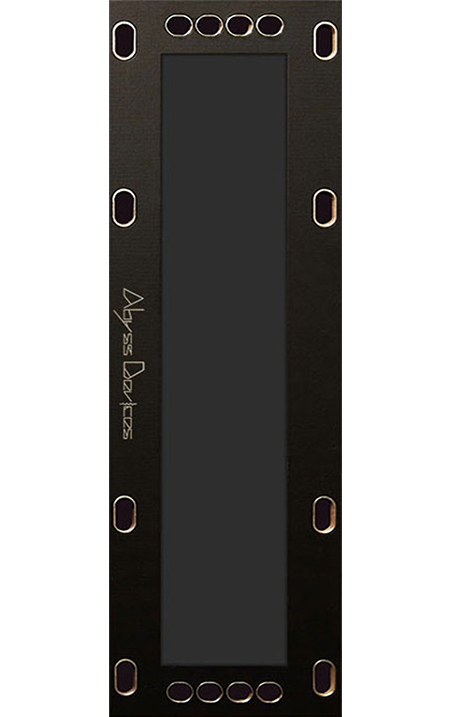Free Shipping to USA and Canada!
New V2 updates:
- Better distortion and vca response.
- Toggle switch on both inputs to choose between modular level or high gain boost that’s high enough to use with very low signals like a guitar with passive pickups, or use it with other modules and completely distort the signal.
- No more complex calibration at the back of the module. Just 1 trimmer to adjust the overall amount of RGB LED brightness and another trimmer to adjust the VCA offset which is calibrated by default to the best setting (you should not change this unless you notice something wrong).
- New panel design and a few other very technical updates.
This module is gnarly and has a lot of gain distortion.
You can even use it without any input and it will do some weird noise using the resonance and feedback knobs. It will self oscillate with the resonance knob clockwise and feedback switch ON.
RGB LED is under the tube and reacts to the output signal.
You can choose which color using front panel trimmers or at the back trimmer for overall RGB effect amount.
RGB LED can be removed from the circuit and will allow a slightly cleaner more stable sound. (remove all black jumpers at the top right on the back of the module)
– Tube VCA Distortion
– Nasty unstable tube and filter circuit design
– 12AX7 JJ tube included
– Hi-Pass or Low Pass circuit using the switch
– CV Controls for cutoff, resonance, feedback and level
– Attenuator for each CV input with corresponding bipolar red/green LED
– Feedback circuit for gnarly unstable effects (even more gnarly if you use 2 different audio sources)
– Dry/Wet balance
– 2 Input mixing
* The tube color does not change by itself like on the website image, it is just as a visual representation of available colors accessible via the trimmers through the front panel. You use a screw driver to change the color manualy.
Width: 16hp / Weight: 163gr / Depth: 43mm
Power consommation:
-12v: 220mA
+12v: 40mA
On modular grid:
V2: https://www.modulargrid.net/e/abyss-devices-saevitum-v2
V1: https://www.modulargrid.net/e/other-unknown-abyss-devices-saevitum
Saevitum features a 2 inputs mixer, then the mixed signal goes into the filter section. The input of the filter is sensitive enough that it can distort easily, adding even more saturation on top of the tube distortion. Resonance knob set fully clockwise will self-oscillate and can sound unstable especialy with the feedback activated. Then the output of the filter goes into the 12ax7 tube distortion circuit. It has a very wide range and distorts easily. If you simply want to add subtle tube warmth to a signal it’s also possible but you need to lower the input knobs a lot. Very little knob changes can affect the sound drastically with the feedback active, but it also depends of what type of signal you put at the inputs. RGB LED under the tube reacts to the sound coming out at the main tube circuit output. You can also change the color of the RGB using the 3 trimpots accessible through the front panel, giving you the choice of a lot of color hues. White LED color is also possible if all 3 trimpots are at 100%. The color and intensity of the RGB you choose can affect the sound in different ways; use this as another setting to color the sound. You can also completely remove the RGB and it’s LED driver chip from the circuit using the jumpers at the back side – if you do this, it will reduce a little bit of power consumption. Trimmers are in order(left=red, center=green, right=blue). Filter section features hipass and lowpass using the top switch. CV with attenuator control for frequency cutoff, resonance, feedback amount and output level. CV LEDs are bipolar red and green and they show the incoming cv (red=negative, green=positive). Feedback signal is designed so that it can completely tear apart the incoming waveform, just adding a bit of feedback sounds like some other modules when they are at their maximum feedback setting. Module comes with a JJ 12ax7 tube easily replaceable for another 12ax7 brand by pulling it off it’s socket. It has reverse power protection, noise filtering caps at the power input and all inputs/outputs are protected against “out to out” patching inadvertences.

